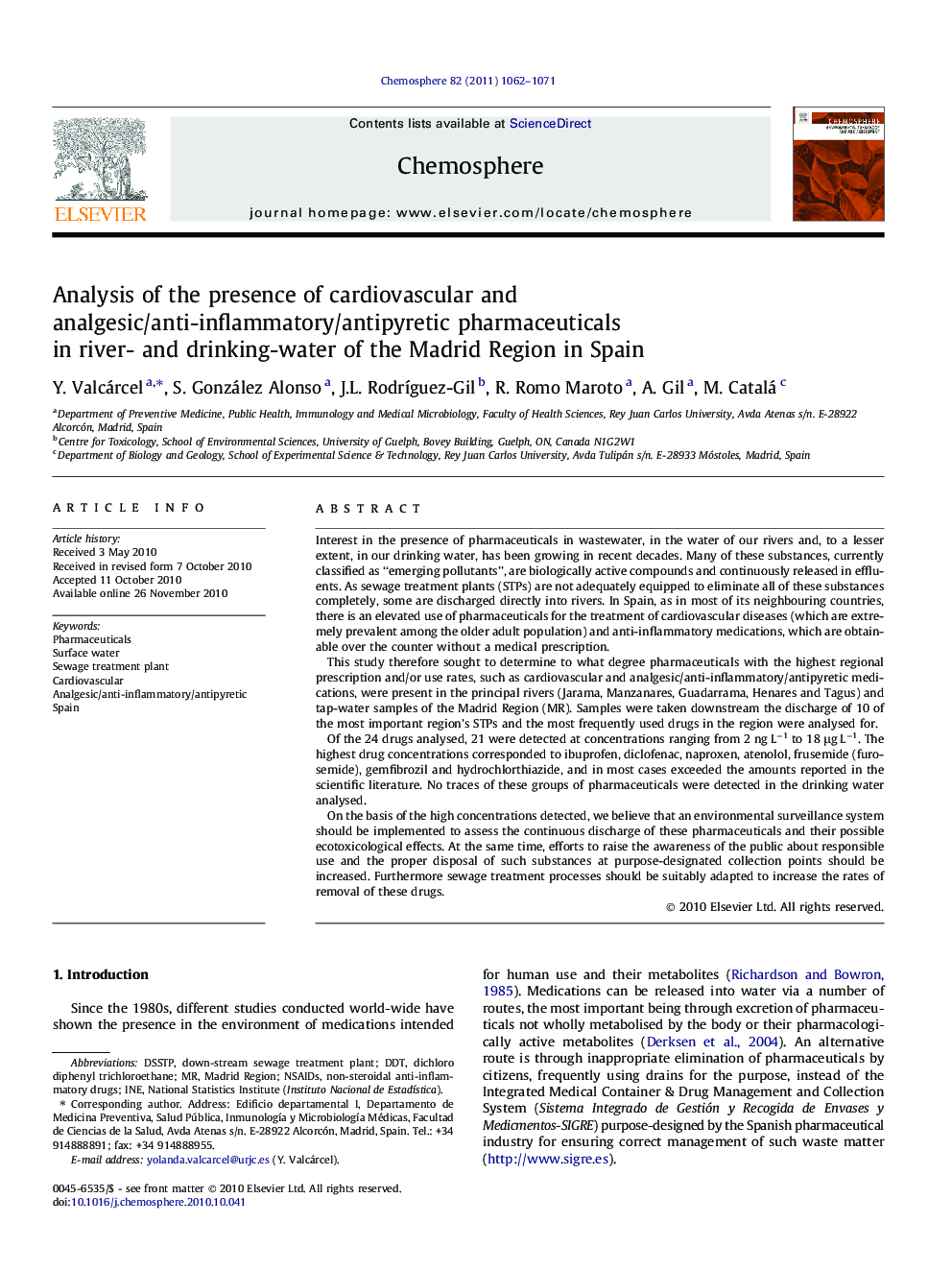| کد مقاله | کد نشریه | سال انتشار | مقاله انگلیسی | نسخه تمام متن |
|---|---|---|---|---|
| 4410954 | 1307570 | 2011 | 10 صفحه PDF | دانلود رایگان |

Interest in the presence of pharmaceuticals in wastewater, in the water of our rivers and, to a lesser extent, in our drinking water, has been growing in recent decades. Many of these substances, currently classified as “emerging pollutants”, are biologically active compounds and continuously released in effluents. As sewage treatment plants (STPs) are not adequately equipped to eliminate all of these substances completely, some are discharged directly into rivers. In Spain, as in most of its neighbouring countries, there is an elevated use of pharmaceuticals for the treatment of cardiovascular diseases (which are extremely prevalent among the older adult population) and anti-inflammatory medications, which are obtainable over the counter without a medical prescription.This study therefore sought to determine to what degree pharmaceuticals with the highest regional prescription and/or use rates, such as cardiovascular and analgesic/anti-inflammatory/antipyretic medications, were present in the principal rivers (Jarama, Manzanares, Guadarrama, Henares and Tagus) and tap-water samples of the Madrid Region (MR). Samples were taken downstream the discharge of 10 of the most important region’s STPs and the most frequently used drugs in the region were analysed for.Of the 24 drugs analysed, 21 were detected at concentrations ranging from 2 ng L−1 to 18 μg L−1. The highest drug concentrations corresponded to ibuprofen, diclofenac, naproxen, atenolol, frusemide (furosemide), gemfibrozil and hydrochlorthiazide, and in most cases exceeded the amounts reported in the scientific literature. No traces of these groups of pharmaceuticals were detected in the drinking water analysed.On the basis of the high concentrations detected, we believe that an environmental surveillance system should be implemented to assess the continuous discharge of these pharmaceuticals and their possible ecotoxicological effects. At the same time, efforts to raise the awareness of the public about responsible use and the proper disposal of such substances at purpose-designated collection points should be increased. Furthermore sewage treatment processes should be suitably adapted to increase the rates of removal of these drugs.
Journal: Chemosphere - Volume 82, Issue 7, February 2011, Pages 1062–1071